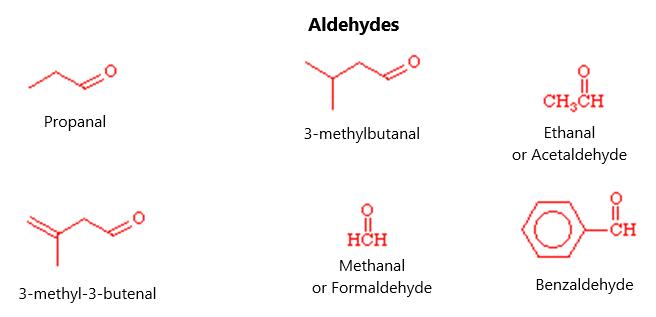These are some common aldehydes: •
H2CO—this is methanal or formaldehyde, the smallest aldehyde
•
CH3CHO—this is ethanal, commonly referred to as acetaldehyde
•
CH3CH2CH2CHO—this is butanal as it has four carbon atoms, commonly called butyraldehyde
•
CH3CH2CH2CH2CHO—this is pentanal as it has five carbon atoms, commonly called valeraldehyde
•
Cyclohexane plus a CHO group is referred to as cyclohexane carbaldehyde
•
Benzene plus a CHO group is referred to as benzene carbaldehyde or simply benzaldehyde
These basic aldehydes have common names and should be memorized.
NAMING KETONES The suffix “-one” is used to define ketones. A ketone is similar to an aldehyde but it has two R groups on either side of the carbonyl group—neither of which is hydrogen. Because it isn’t at the end of the chain, it needs to be numbered. Numbering starts at the carbon atom that gives the carbonyl group the lowest possible number. Propanone and phenylethanone don’t require a locator number because the carbonyl chain can only happen at one spot in the molecule. Another way to name a ketone is just to say the names of the two side groups attached to the carbonyl group and then add “ketone” to the end of the name. The R chains are listed alphabetically. There are common names, such as “acetone”, which is the name for propanone. Another example is something like 3-hexanone, which can also be called ethyl propyl ketone (named for the R and R-prime side chains). Figure 41 shows some ketones that should be memorized:
78




























































